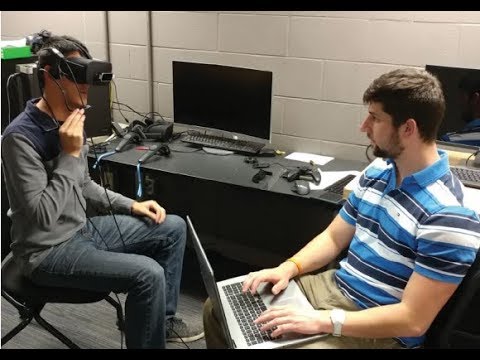Full Title: JunoVR: Improving a Breath Sensor for Virtual Reality (VR) Applications
Presenters: Thomas Driver, Brandon Perry
Advised by: Morgan Benton
Sponsors: Chris Smith — JunoVR
Abstract: In today’s world technology is advancing faster each year and is able to aid us in finding solutions in critical areas of our lives. One of these critical areas is health-care facilities. The doctors and staff working within these facilities are in an environment where they often need to know at a moments notice the location of a patient or other health specialist. One solution to this need is the LoCATE system which uses the improvements in technology to track people in near real time. LoCATE makes use of the current 802.11 wireless networks within a health-care facility and edge node technology as its tracking solution. The edge nodes constantly communicate with the current network in an non-intrusive manner. The data collected from the network with the edge nodes is able to locate the carrier of the edge node within a reasonable range of variability. The data is then pushed and stored on a cloud storage system where it waits to be accessed by our mobile application. The mobile application will display the near real time location of any patient or staff member. The small size of the edge nodes allows for anyone to easily carry the node on a lanyard around their neck. This simple and small solution known as LoCATE is cost effective due to the use of the current 802.11 wireless network infrastructure. Overall LoCATE is the solution that the health-care facilities need and in a short time will be tested and implemented. Virtual Reality (VR), a rapidly growing technology, provides a fully immersive visual and auditory experience. While VR’s early applications were predominantly games and entertainment, recent applications have expanded to education and therapy. VR has been used to treat PTSD, chronic anxiety, provide portable “sensory rooms” for people with autism spectrum characteristics, and to help people learn to meditate and cultivate mindfulness. JunoVR, the sponsor of this project, developed a novel input/output device, a breath sensor, that allows VR users to visualize and control their breath while meditating. The goal of this project was to take the JunoVR breath sensor prototype and develop the design to make it more durable, easy to manufacture and assemble, and affordable to produce. The team also explored making the product wireless and able to support multiple different VR platforms.

